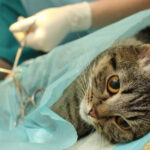Can Cats Eat Plants, and if so, which ones are safe? This is a common concern for cat owners, and solcat.net is here to provide you with comprehensive information. Discover the reasons behind this behavior, identify toxic plants to avoid, and learn about safe alternatives for your feline friend, ensuring a happy and healthy life for your beloved pet. Dive into our detailed guide to understand feline dietary habits and create a safe environment!
1. Why Do Cats Eat Plants? Understanding the Feline Fascination
Is your cat munching on your houseplants, and you’re wondering, “Why do cats eat plants?” It’s a common behavior, and understanding the reasons behind it can help you address it effectively.
Cats, being obligate carnivores, primarily need meat in their diet to thrive. However, plant-eating behavior, known as pica, can stem from various reasons. According to a study published in the Journal of Veterinary Behavior, up to 68% of cats exhibit plant-eating behavior at some point in their lives.
Here’s a deeper look at the possible causes:
- Dietary Deficiency: Cats might eat plants if they lack certain nutrients in their diet, such as fiber or specific vitamins and minerals. According to the American Animal Hospital Association (AAHA), a balanced diet is crucial for preventing nutrient deficiencies.
- Digestive Aid: Plant matter can act as a natural digestive aid for cats. “Cats sometimes eat plants to help move hairballs through their digestive system,” explains Dr. Sarah Wooten, DVM, CVJ, a veterinary expert writing for Petfinder. The fiber in plants can stimulate bowel movements and alleviate constipation.
- Natural Instinct: In the wild, cats might consume small amounts of plant matter as part of their prey’s digestive contents. This instinct can persist in domestic cats.
- Boredom or Anxiety: Sometimes, plant eating is a behavioral issue. Bored cats or those experiencing anxiety may chew on plants as a form of entertainment or stress relief. A study in Applied Animal Behaviour Science suggests that providing enrichment activities can reduce such behaviors.
- Taste or Texture: Some cats simply enjoy the taste or texture of certain plants. This is more common with leafy greens that offer a satisfying crunch.
- To Induce Vomiting: Some cats may instinctively eat plants to induce vomiting when they feel unwell. This is a natural way for them to rid themselves of indigestible material or toxins.
- Dental Health: Chewing on plants can sometimes help cats clean their teeth and massage their gums, promoting dental health. However, this is not a primary reason for plant consumption.
To address your cat’s plant-eating behavior, consider the following steps:
- Ensure a Balanced Diet: Feed your cat a high-quality commercial cat food that meets all their nutritional needs.
- Provide Fiber Supplementation: If your cat seems to be seeking fiber, consider adding a small amount of plain, cooked pumpkin or a fiber supplement to their diet.
- Offer Cat-Safe Plants: Provide cat grass or other safe plants for your cat to chew on, satisfying their urge without risking their health.
- Enrich Their Environment: Make sure your cat has plenty of toys, scratching posts, and playtime to prevent boredom and anxiety.
- Consult Your Veterinarian: If the behavior persists or if your cat shows signs of illness, consult your veterinarian for further evaluation.
By understanding the reasons behind your cat’s plant-eating behavior and taking appropriate steps, you can protect your cat from potential harm and ensure they get the nutrition and enrichment they need.
2. The Dangers of Toxic Plants: Protecting Your Feline Friend
When pondering, “Can cats eat plants?”, the primary concern is toxicity. Many common houseplants are poisonous to cats and can cause a range of health problems, from mild irritation to severe organ damage.
According to the ASPCA’s Animal Poison Control Center, lilies are among the most dangerous plants for cats. Even small amounts can cause kidney failure. Other toxic plants include:
- Lilies: All varieties of lilies (e.g., Asiatic, Easter, Tiger) are extremely toxic to cats.
- Azaleas and Rhododendrons: These contain toxins that can affect the heart and nervous system.
- Tulips and Hyacinths: The bulbs are particularly toxic, causing gastrointestinal upset and cardiac issues.
- Oleander: Highly toxic, affecting the heart, causing vomiting, and potentially leading to death.
- Sago Palm: Contains cycasin, which can cause liver failure.
- Daffodils: Can cause vomiting, diarrhea, and abdominal pain.
- Autumn Crocus: Toxic to multiple organ systems, including the bone marrow.
- Cyclamen: Causes severe gastrointestinal distress and can lead to seizures.
- Dieffenbachia (Dumb Cane): Causes oral irritation, excessive drooling, and difficulty swallowing.
- Philodendron: Similar to Dieffenbachia, causing oral irritation and gastrointestinal upset.
- Poinsettia: Often overstated, but can cause mild irritation to the mouth and stomach.
Here is a more comprehensive list of toxic plants and their effects:
| Plant | Toxicity Level | Symptoms |
|---|---|---|
| Lilies (all varieties) | High | Kidney failure, vomiting, lethargy, loss of appetite |
| Azaleas and Rhododendrons | High | Vomiting, diarrhea, weakness, heart problems, central nervous system depression |
| Tulips and Hyacinths | Medium | Vomiting, diarrhea, drooling, increased heart rate, difficulty breathing |
| Oleander | High | Heart problems, vomiting, diarrhea, tremors, seizures, death |
| Sago Palm | High | Liver failure, vomiting, diarrhea, seizures, coma |
| Daffodils | Medium | Vomiting, diarrhea, abdominal pain, convulsions, low blood pressure |
| Autumn Crocus | High | Vomiting, diarrhea, bone marrow suppression, liver and kidney damage |
| Cyclamen | Medium | Vomiting, diarrhea, seizures, heart abnormalities |
| Dieffenbachia (Dumb Cane) | Low | Oral irritation, excessive drooling, difficulty swallowing, vomiting |
| Philodendron | Low | Oral irritation, excessive drooling, difficulty swallowing, vomiting |
| Poinsettia | Low | Mild irritation to the mouth and stomach, vomiting, diarrhea |
| Castor Bean | High | Abdominal pain, drooling, vomiting, diarrhea, loss of appetite, dehydration, tremors, seizures |
| Foxglove | High | Cardiac abnormalities, vomiting, diarrhea, weakness, seizures |
| Hydrangea | Low | Vomiting, diarrhea, lethargy |
| Iris | Low | Vomiting, drooling, diarrhea |
| Kalanchoe | Medium | Vomiting, diarrhea, heart arrhythmias |
| Morning Glory | Low | Vomiting, tremors, incoordination |
If you suspect your cat has ingested a toxic plant, it’s crucial to act quickly. Contact your veterinarian or the ASPCA Animal Poison Control Center immediately.
3. Safe Plants for Cats: Creating a Cat-Friendly Green Space
When you consider “Can cats eat plants?”, it’s important to know there are safe options. You can create a cat-friendly environment by choosing plants that pose no threat to your feline companion.
Some safe plants include:
- Cat Grass: A mix of grasses like wheat, barley, and oat grass, specifically grown for cats.
- Catnip: Known for its euphoric effects on cats, catnip is safe and enjoyable for most felines.
- Valerian: Similar to catnip, valerian can induce playful behavior in cats.
- Spider Plant: Easy to grow and non-toxic, spider plants are a popular choice for cat owners.
- African Violet: These flowering plants add color to your home and are safe for cats.
- Boston Fern: A classic houseplant that is non-toxic to cats.
- Orchid: These elegant flowers are safe for cats if they decide to nibble.
- Areca Palm: A large, tropical plant that is non-toxic and adds a touch of greenery to your home.
- Prayer Plant: Known for its leaves that fold up at night, this plant is safe for cats.
- Swedish Ivy: An easy-to-grow trailing plant that is non-toxic to cats.
Here is a list of safe plants that you can grow indoors:
| Plant | Benefits | Care Tips |
|---|---|---|
| Cat Grass | Provides fiber, aids digestion, natural and safe for cats | Keep soil moist, provide plenty of sunlight, replace when it becomes dry or eaten down |
| Catnip | Induces playful behavior, relieves stress, safe in moderation | Grow in a pot with well-draining soil, provide sunlight, trim regularly |
| Valerian | Similar to catnip, induces playful behavior | Grow in a pot or garden, provide partial sunlight, keep soil moist |
| Spider Plant | Easy to grow, air-purifying, non-toxic | Indirect sunlight, water when soil is dry, propagate easily from pups |
| African Violet | Adds color, non-toxic, easy to care for | Indirect sunlight, water from the bottom to avoid leaf spots, keep in a warm location |
| Boston Fern | Air-purifying, non-toxic, adds greenery | High humidity, indirect sunlight, keep soil consistently moist |
| Orchid | Elegant flowers, non-toxic | Indirect sunlight, water sparingly, well-draining potting mix |
| Areca Palm | Tropical look, non-toxic, air-purifying | Bright, indirect sunlight, water when topsoil is dry, maintain humidity |
| Prayer Plant | Unique leaf movement, non-toxic | Indirect sunlight, water regularly, maintain high humidity |
| Swedish Ivy | Easy to grow, trailing plant, non-toxic | Bright, indirect sunlight, water when topsoil is dry, prune to encourage bushier growth |
| Herbs (Parsley, Rosemary, Basil) | Provide enrichment, safe to nibble, aromatic | Grow in pots with well-draining soil, provide plenty of sunlight, water regularly and harvest herbs frequently |
4. Identifying Toxic Plants: Visual Guide
“Can cats eat plants?” becomes a more manageable question when you can identify toxic varieties. Visual identification is key to keeping your cat safe. Here are some common toxic plants to avoid:
4.1. Azaleas
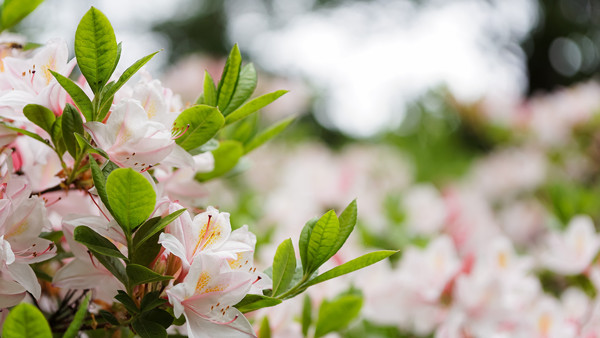 Azalea toxicity in cats. Keep these out of reach.
Azalea toxicity in cats. Keep these out of reach.
Azaleas are popular flowering plants, but they contain toxins that can cause vomiting, diarrhea, and even heart problems in cats. Keep them out of reach.
4.2. Autumn Crocus
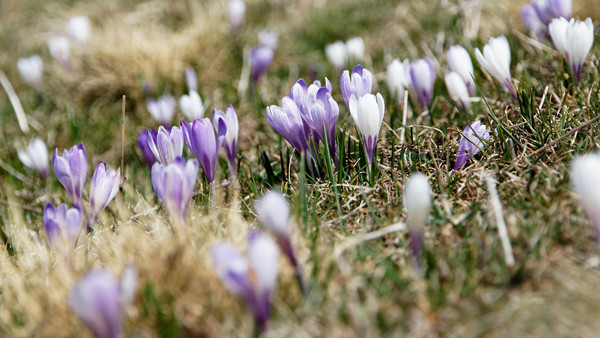 Autumn Crocus toxicity in cats.
Autumn Crocus toxicity in cats.
The Autumn Crocus is highly toxic and can cause severe gastrointestinal upset, bone marrow suppression, and organ damage.
4.3. Cyclamen
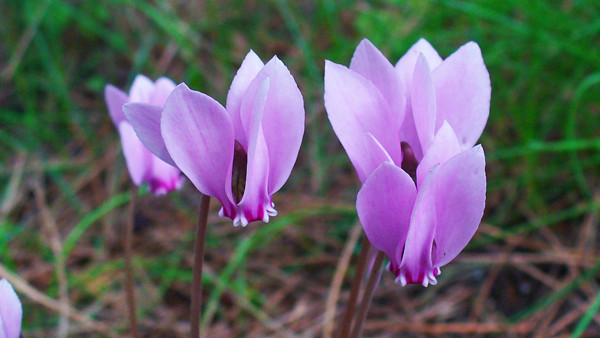 Cyclamen toxicity in cats.
Cyclamen toxicity in cats.
Cyclamen plants can cause intense vomiting, diarrhea, and even seizures in cats. The tubers are particularly toxic.
4.4. Daffodils
 Daffodil toxicity in cats.
Daffodil toxicity in cats.
Daffodils contain alkaloids that can cause vomiting, diarrhea, and abdominal pain. The bulbs are the most toxic part of the plant.
4.5. Lilies (All Varieties)
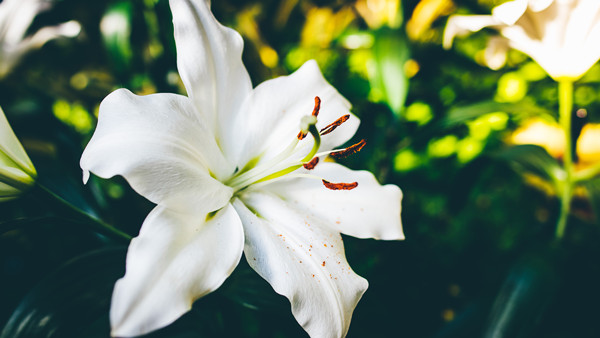 All Varieties of Lily are toxic to cats.
All Varieties of Lily are toxic to cats.
Lilies are extremely toxic to cats, and even a small amount can cause kidney failure. Keep all lilies away from your feline friends.
4.6. Sago Palm
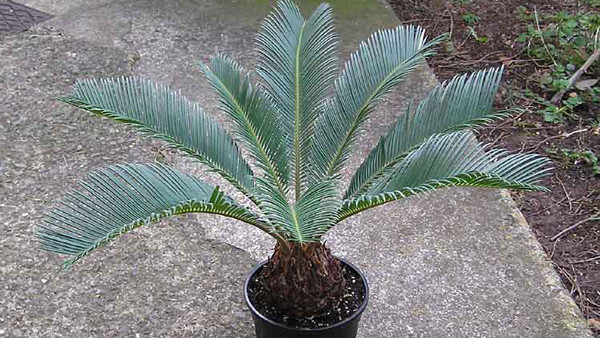 Sago Palm toxicity in cats.
Sago Palm toxicity in cats.
Sago Palms contain cycasin, which can cause liver failure in cats. All parts of the plant are toxic.
4.7. Hyacinths and Tulips
 Hyacinths and Tulips toxicity in cats.
Hyacinths and Tulips toxicity in cats.
Hyacinths and Tulips, especially the bulbs, can cause vomiting, diarrhea, and increased heart rate in cats.
5. Behavioral Strategies: Discouraging Plant Eating
“Can cats eat plants?” is a question that can be addressed not only by removing toxic plants but also by modifying your cat’s behavior. Here are some strategies to discourage plant eating:
- Provide Safe Alternatives: Offer cat grass or other safe plants for your cat to chew on. Place these near your houseplants to redirect their attention.
- Use Deterrents: Apply a cat-safe deterrent spray to your houseplants. These sprays usually have a bitter taste that cats dislike.
- Make Plants Less Accessible: Place houseplants out of reach, such as on high shelves or in hanging baskets.
- Provide Enrichment: Ensure your cat has plenty of toys, scratching posts, and playtime to prevent boredom and anxiety.
- Use Motion-Activated Devices: Place motion-activated devices near your plants that emit a harmless spray of air or make a noise when your cat approaches.
- Create a Designated Cat Zone: Designate a specific area for your cat with toys, scratching posts, and a comfortable bed. This can help reduce their interest in other areas of the house.
- Consistent Training: Use positive reinforcement to train your cat to stay away from plants. Reward them with treats or praise when they ignore the plants.
- Bitter Apple Spray: A commercially available spray with a bitter taste can be applied to plants to deter cats.
- Double-Sided Tape: Place double-sided tape around the base of the plants. Cats dislike the sticky texture and will avoid the area.
- Aluminum Foil: Cover the soil around the plants with aluminum foil. Cats generally dislike the sound and feel of walking on foil.
6. Nutritional Considerations: Meeting Your Cat’s Dietary Needs
When addressing the question “Can cats eat plants?”, it’s essential to consider your cat’s nutritional needs. A balanced diet can reduce the likelihood of plant-eating behavior.
- High-Quality Cat Food: Ensure your cat’s diet consists of high-quality commercial cat food that meets all their nutritional requirements.
- Fiber: If your cat seems to be seeking fiber, consider adding a small amount of plain, cooked pumpkin or a fiber supplement to their diet.
- Vitamins and Minerals: Ensure your cat is getting all the necessary vitamins and minerals through their diet. Consult your veterinarian about supplementation if needed.
- Protein: Cats are obligate carnivores and require a high-protein diet. Ensure their food contains a sufficient amount of animal protein.
- Wet Food: Adding wet food to your cat’s diet can help with hydration and provide additional nutrients.
- Probiotics: Probiotics can help improve your cat’s digestive health and reduce the urge to eat plants.
- Avoid Table Scraps: Avoid feeding your cat table scraps, as they may not provide the necessary nutrients and can lead to unwanted behaviors.
7. Emergency Measures: What to Do If Your Cat Eats a Toxic Plant
If you suspect your cat has ingested a toxic plant, immediate action is crucial. Here are the steps to take:
- Identify the Plant: Determine what type of plant your cat ate. This will help your veterinarian determine the appropriate treatment.
- Assess Your Cat’s Condition: Look for symptoms such as vomiting, diarrhea, drooling, difficulty breathing, or seizures.
- Contact Your Veterinarian: Call your veterinarian immediately and explain the situation. Follow their instructions carefully.
- ASPCA Animal Poison Control Center: If you can’t reach your veterinarian, call the ASPCA Animal Poison Control Center at (888) 426-4435. Note that a consultation fee may apply.
- Bring a Sample: If possible, bring a sample of the plant to the veterinarian for identification.
- Follow Veterinary Advice: Follow your veterinarian’s advice regarding treatment. This may include inducing vomiting, administering activated charcoal, or providing supportive care.
- Monitor Your Cat: Monitor your cat closely for any changes in their condition and report them to your veterinarian.
8. The Role of Enrichment: Keeping Your Cat Happy and Engaged
Enrichment plays a vital role in addressing the question, “Can cats eat plants?”. A stimulated and engaged cat is less likely to turn to destructive behaviors like plant eating.
Here are some enrichment strategies:
- Interactive Toys: Provide toys that mimic hunting behavior, such as feather wands, laser pointers, and puzzle feeders.
- Scratching Posts: Offer a variety of scratching posts and surfaces to satisfy your cat’s natural scratching instincts.
- Climbing Structures: Cats love to climb. Provide cat trees, shelves, or other climbing structures to enrich their environment.
- Window Perches: Cats enjoy watching the outside world. Provide window perches where they can observe birds, squirrels, and other wildlife.
- Playtime: Spend time playing with your cat each day. This helps them burn energy and bond with you.
- Food Puzzles: Use food puzzles to make mealtime more challenging and engaging.
- Rotating Toys: Rotate your cat’s toys regularly to keep them interested and prevent boredom.
- Catnip Toys: Offer toys filled with catnip to provide a stimulating and enjoyable experience.
- Environmental Sounds: Play nature sounds or music designed for cats to create a calming and enriching environment.
- Social Interaction: If you have multiple cats, ensure they have opportunities for social interaction and play.
9. Consulting with Professionals: When to Seek Expert Advice
While many aspects of the question “Can cats eat plants?” can be managed at home, there are times when professional advice is necessary.
- Veterinarian: Consult your veterinarian if your cat exhibits persistent plant-eating behavior, shows signs of illness, or if you suspect they have ingested a toxic plant.
- Veterinary Behaviorist: If plant eating is related to behavioral issues like anxiety or boredom, a veterinary behaviorist can help develop a behavior modification plan.
- Certified Feline Behavior Consultant: A certified feline behavior consultant can provide guidance on environmental enrichment and behavior modification techniques.
- ASPCA Animal Poison Control Center: The ASPCA Animal Poison Control Center can provide expert advice on plant toxicity and treatment options.
- Nutritionist: A veterinary nutritionist can help you develop a balanced diet plan for your cat to ensure they are getting all the necessary nutrients.
10. Recent Research and Updates: Staying Informed About Feline Health
Staying informed about the latest research and updates on feline health is essential for providing the best care for your cat and addressing the question, “Can cats eat plants?”
- Cornell Feline Health Center: The Cornell Feline Health Center conducts research on feline diseases and provides valuable information for cat owners.
- American Animal Hospital Association (AAHA): AAHA provides guidelines and resources for pet owners and veterinary professionals.
- Journal of Veterinary Internal Medicine: This journal publishes research articles on various aspects of feline health.
- Applied Animal Behaviour Science: This journal publishes studies on animal behavior, including feline behavior.
- Veterinary Information Network (VIN): VIN is an online community for veterinary professionals that provides access to the latest research and information.
- Pet Poison Helpline: This resource provides information on pet toxins and can help you determine if a plant is toxic to cats.
Here’s a list of recent studies and updates on feline health:
| Topic | Details | Source |
|---|---|---|
| Feline Diet and Nutrition | Recent studies emphasize the importance of high-protein diets for cats and the potential benefits of adding omega-3 fatty acids for coat health and inflammation reduction. | Journal of Animal Physiology and Animal Nutrition |
| Plant Toxicity in Cats | Updated lists of toxic plants and their effects on cats, including new information on less common but dangerous species. | ASPCA Animal Poison Control Center |
| Behavioral Studies on Plant Eating | Research into the causes of plant-eating behavior in cats, including potential links to dietary deficiencies and environmental enrichment. | Applied Animal Behaviour Science |
| Advances in Feline Kidney Disease Treatment | New treatments and management strategies for feline kidney disease, a common condition exacerbated by certain plant toxins. | Journal of Veterinary Internal Medicine |
| The Role of Gut Microbiome in Feline Health | Emerging research on the importance of a balanced gut microbiome for feline health, including the potential benefits of probiotics and prebiotics. | Veterinary Clinics of North America |
| Updates on Feline Vaccination Protocols | Revised vaccination guidelines based on recent studies on the efficacy and duration of various vaccines. | American Animal Hospital Association (AAHA) |
| New Insights into Feline Diabetes | Recent findings on the causes and management of feline diabetes, including the role of diet and insulin therapy. | Journal of Feline Medicine and Surgery |
| Developments in Feline Cancer Treatment | New therapies and diagnostic tools for feline cancer, including advances in chemotherapy, radiation therapy, and immunotherapy. | Veterinary Cancer Society |
| Innovations in Feline Dental Care | Updated guidelines on feline dental care, including the importance of regular dental cleanings and the use of dental diets and treats. | American Veterinary Dental College |
| The Impact of Environmental Enrichment | Studies highlighting the positive effects of environmental enrichment on feline behavior and well-being, including the reduction of stress and destructive behaviors like plant eating. | Journal of Feline Behavior |
By staying informed about the latest research and updates, you can make informed decisions about your cat’s health and well-being.
At solcat.net, we are dedicated to providing you with the most up-to-date and reliable information on feline care. Whether you’re dealing with plant-eating behavior, nutritional concerns, or other health issues, we’re here to help you navigate the challenges and provide the best possible life for your feline companion.
Understanding “Can cats eat plants?” involves knowing why cats eat plants, identifying toxic and safe plants, implementing behavioral strategies, meeting nutritional needs, taking emergency measures, providing enrichment, consulting professionals, and staying informed about feline health. By addressing these aspects, you can create a safe and enriching environment for your cat.
If you want to learn more information or connect with a community of cat lovers, visit solcat.net today.
Address: 950 Alaskan Way, Seattle, WA 98104, United States
Phone: +1 (206) 386-4000
Website: solcat.net
FAQ: Can Cats Eat Plants? Your Questions Answered
1. Why do cats eat plants?
Cats eat plants for various reasons, including dietary deficiencies, digestive aid, natural instinct, boredom, taste, or to induce vomiting. It’s essential to identify the cause to address the behavior effectively.
2. Are all plants toxic to cats?
No, not all plants are toxic to cats. Some plants, like cat grass, catnip, and spider plants, are safe for cats to consume.
3. What are the most toxic plants for cats?
Lilies (all varieties), azaleas, tulips, sago palm, and daffodils are among the most toxic plants for cats. Ingestion can cause severe health problems, including kidney failure and liver damage.
4. What should I do if my cat eats a toxic plant?
If you suspect your cat has eaten a toxic plant, contact your veterinarian or the ASPCA Animal Poison Control Center immediately. Provide information about the plant and your cat’s symptoms for appropriate guidance.
5. How can I stop my cat from eating plants?
Provide safe alternatives like cat grass, use deterrent sprays, make plants less accessible, enrich your cat’s environment with toys and playtime, and use consistent training techniques.
6. Can a balanced diet prevent plant eating?
Yes, a balanced diet that meets all your cat’s nutritional needs can reduce the likelihood of plant-eating behavior. Ensure your cat’s food is high-quality and contains sufficient fiber, vitamins, and minerals.
7. What are some safe plants I can grow indoors?
Safe plants for indoor growth include cat grass, catnip, valerian, spider plants, African violets, and Boston ferns. These plants are non-toxic and can provide enrichment for your cat.
8. Is catnip safe for cats to eat?
Yes, catnip is safe for cats to eat. It typically induces playful behavior and is enjoyable for most felines in moderation.
9. How can I create a cat-friendly green space in my home?
Choose non-toxic plants, place them in areas accessible to your cat, provide safe alternatives like cat grass, and ensure your cat has plenty of enrichment activities to keep them engaged.
10. When should I consult a professional about my cat’s plant-eating behavior?
Consult a veterinarian if your cat exhibits persistent plant-eating behavior, shows signs of illness, or if you suspect they have ingested a toxic plant. A veterinary behaviorist can help address behavioral issues related to plant eating.

